Gion Festival – month long activities through the whole of July
It’s festival time in Kyoto and the city is in full festive mode. Gion Festival is one of the country’s grandest affairs, lasting a month in all, but at its heart is the procession of floats on July 17th, and the three evenings beforehand when the floats are on display and the streets crowded with onlookers. Shops put on special displays 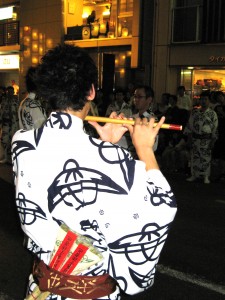 for the occasion and the atmosphere is like one huge street party. Tradition mixes with modernity as ‘Gion bayashi’ music pervades the air while girls in yukata shout into their mobile phones and snack on fast food. This year male yukata seemed more prevalent than previously, and as the weather was good the streets were packed. The atmosphere is wonderful, with everyone friendly and in good spirits. Along with the traditonal fare are a few wild surprises….
for the occasion and the atmosphere is like one huge street party. Tradition mixes with modernity as ‘Gion bayashi’ music pervades the air while girls in yukata shout into their mobile phones and snack on fast food. This year male yukata seemed more prevalent than previously, and as the weather was good the streets were packed. The atmosphere is wonderful, with everyone friendly and in good spirits. Along with the traditonal fare are a few wild surprises….
The festival started out in the early Heian Period (794-1185) to stop a series of plagues. It was put on as an entertainment for the kami, to ask for prevention of the pestilence. Over time it developed into a way for the city’s merchant families and craft guilds to exhibit their goods, with the development of large floats decorated with tapestries, bands of musicians and the opening up of private houses to show their artistic treasures. Large wheels were added to the floats so that they could be moved, and in the fourteenth century a second storey was added for musicians. With the development of overseas commerce in the sixteenth century, artworks from China, Persian and even Europe were added. There are two types of floats: yama consist of pine trees, mikoshi and mannequins, with scenes from Chinese and Japanese history. Hoko are massive structures, nearly ten tons in weight, which are dragged by teams of up to fifty people. Getting them round corners is a matter of some skill…
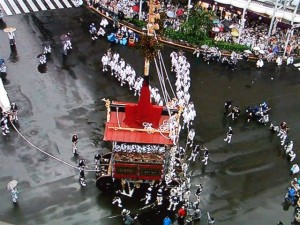
Hoko at the crossroads (Aerial shot on tv in 2010)
The festival is all about fun and displaying Kyoto’s heritage to the world, but the Shinto rituals operating out of Yasaka Shrine remain at its heart. Buying protection from evil is a vital component, and teams of neighbourhood locals compete to attract customers….
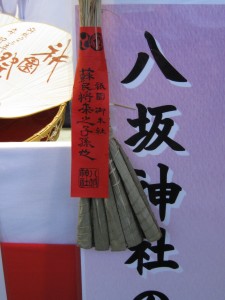
Talisman to ward off evil
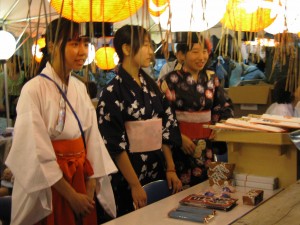
Friendly sales staff
Away from the crowds, the side streets offer amazing displays which make for a quiet festival of their own. Here are some of the displays one comes across….
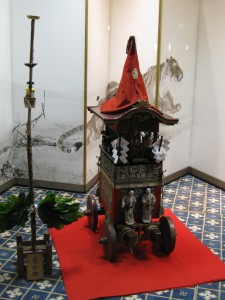
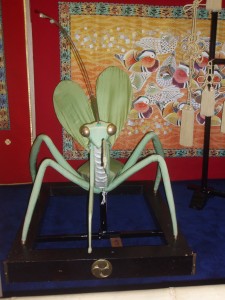
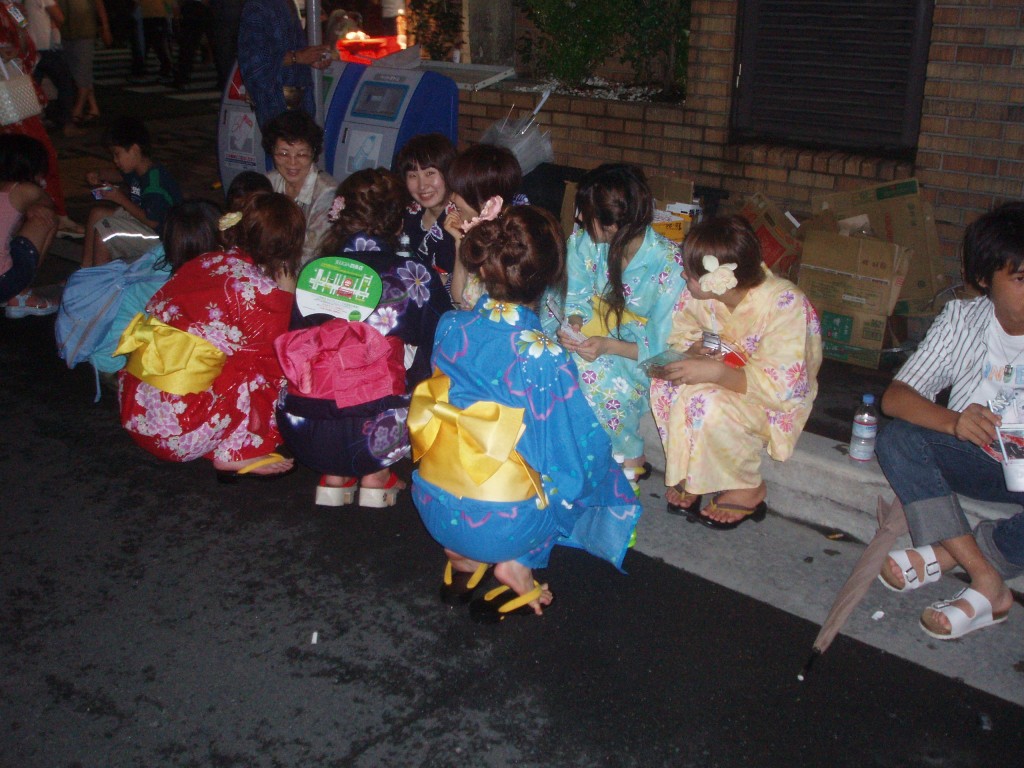

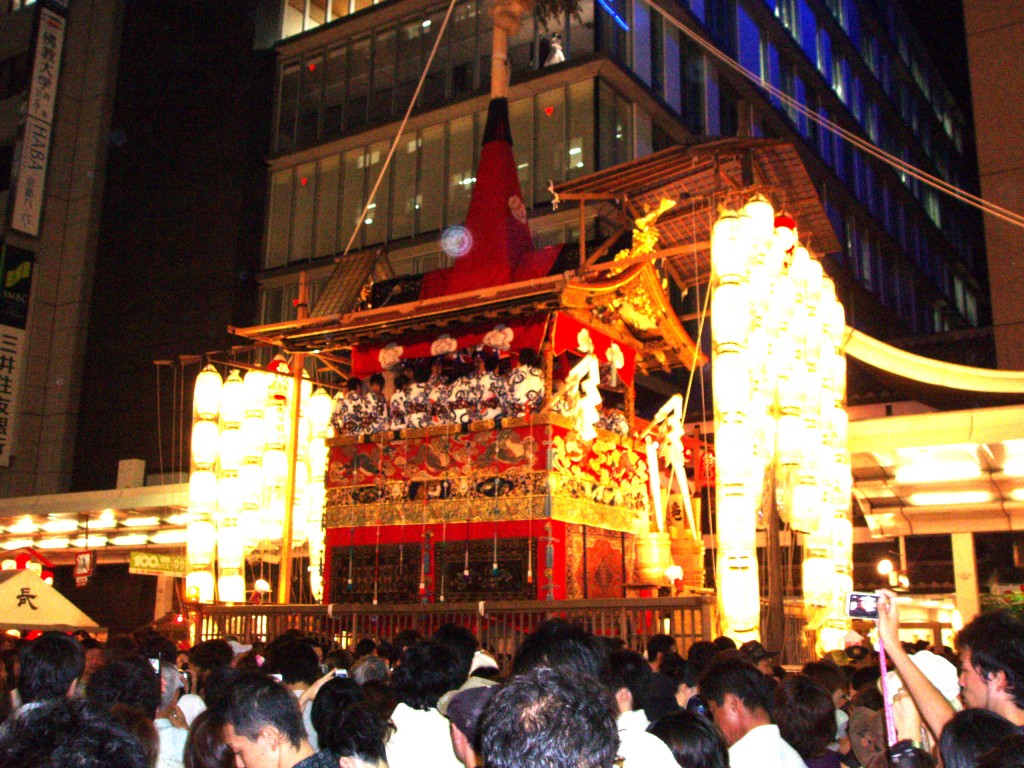
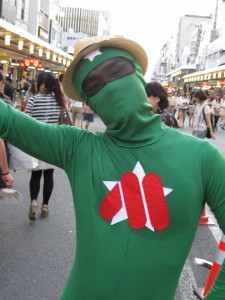
Hi, I don’t know how to comment on your article about the shrines that isn’t in Japan so I’m sorry to post my comment here. Do you know if the Wako Jinja is still active ? Cause I searched everywhere but I do’nt find any proof that it’s still here. And I’m French and it’s the only possibility to have a slightest chance for me to buy a kamidana or a ofunda or even an omamori.(And today’s my birthday so it’s the only chance for my go to it since I’m still a teenager who doesn’t have a car.
Thanks
Frisk
Thank you for the enquiry. As far as I’m aware, that is not really a functioning shrine in the sense that you mean. It’s rather a small shrine (hokora) within a Buddhist temple, and there is only a once-a-year festival to honour the kami. Apart from that there are no services offered and no Shinto priest to offer them. I would suggest instead that you contact a Shinto priest working in Paris. Please search for Yabuhara Shrine, a temporary shrine run by the priest Masatsugu Okutani.
Thanks for your reply.
Unfortunately, Paris is way too away from my home (I’m in the south of France, so I’m closer to Spain than Paris, to tell you).
But I’ll search their website
I searched on their website and Facebook page but I found nothing about a permanent shrine/jinja nor kamidana/ofunda sales, so what would you recommend me to do ?
Thank you for your enquiry. The shrine hosting the festival is Yasaka Jinja in the Gion area of Kyoto. You’ll find lots about it on the internet, though for kamidana or ofuda sales you may have to ask someone to go to the shrine on your behalf. Otherwise if you want to buy online, you would probably be better off doing a google search or trying on ebay.